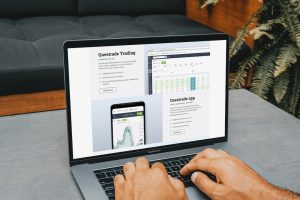Forex charts are an essential tool for traders to analyze the performance of various currency pairs. These charts display the price movements of a currency pair over a specific period, enabling traders to identify trends and patterns. However, in addition to tracking price movements, traders also need to track trading volumes to gain a comprehensive understanding of market dynamics.
Forex trading volume refers to the total number of currency units traded within a specific period. Trading volume is a crucial indicator of market liquidity and can provide valuable insights into market trends and changes in sentiment. Unlike the stock market, where trading volumes are publicly available, forex trading volumes are not reported publicly. Thus, traders need to rely on forex charting tools to track trading volumes.
There are several forex charts that traders can use to see trading volumes. Some of the most popular charts are:
1. Tick charts
Tick charts measure the number of transactions that occur within a specific timeframe. These charts display each price movement as a single bar, with the height of the bar reflecting the number of trades executed within that timeframe. Tick charts are ideal for short-term traders who need to track changes in market sentiment and momentum.
Since tick charts display each price movement as a single bar, they can provide traders with a more accurate picture of market dynamics. Unlike time-based charts, which may display multiple bars for a single price movement, tick charts show only one bar for each price movement, making it easier for traders to identify trends and patterns.
2. Volume charts
Volume charts display the total number of currency units traded within a specific timeframe. Unlike tick charts, which track the number of transactions, volume charts track the actual volume of currency units exchanged. These charts are ideal for traders who need to track the overall trading activity of a currency pair.
Volume charts display each price movement as a single bar, with the height of the bar reflecting the total volume of currency units traded within that timeframe. Volume charts can provide traders with a clear picture of market liquidity and can help them identify potential support and resistance levels.
3. Renko charts
Renko charts display price movements in the form of bricks, with each brick representing a fixed price movement. These charts are ideal for traders who need to filter out market noise and focus on significant price movements.
Renko charts do not display time on the horizontal axis but instead focus on price movements. Thus, traders can track trading volumes by monitoring the size of each brick. A larger brick indicates a higher trading volume, while a smaller brick indicates a lower trading volume.
4. Heikin-Ashi charts
Heikin-Ashi charts display price movements using a modified candlestick chart. These charts aim to filter out market noise and provide traders with a clearer picture of market trends.
Like Renko charts, Heikin-Ashi charts do not display time on the horizontal axis. Instead, they use a modified formula to calculate each candle’s open, close, high, and low prices. These charts can help traders track trading volumes by monitoring the size of each candle. A larger candle indicates a higher trading volume, while a smaller candle indicates a lower trading volume.
In conclusion, tracking trading volumes is a crucial aspect of forex trading. While there are several forex charts that traders can use to track trading volumes, the choice of chart depends on the trader’s trading style and preferences. Traders should experiment with different charts and find the one that works best for them. By tracking trading volumes, traders can gain a comprehensive understanding of market dynamics and make informed trading decisions.





